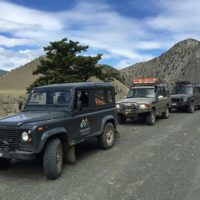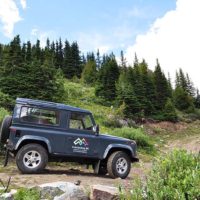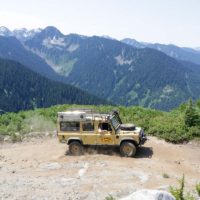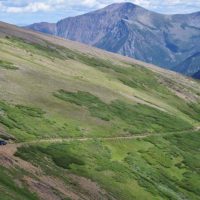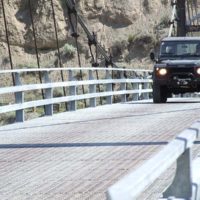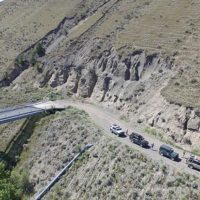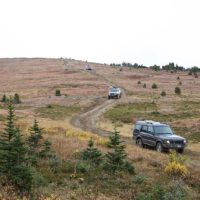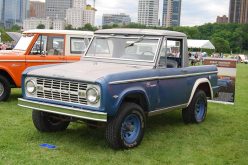Overland!
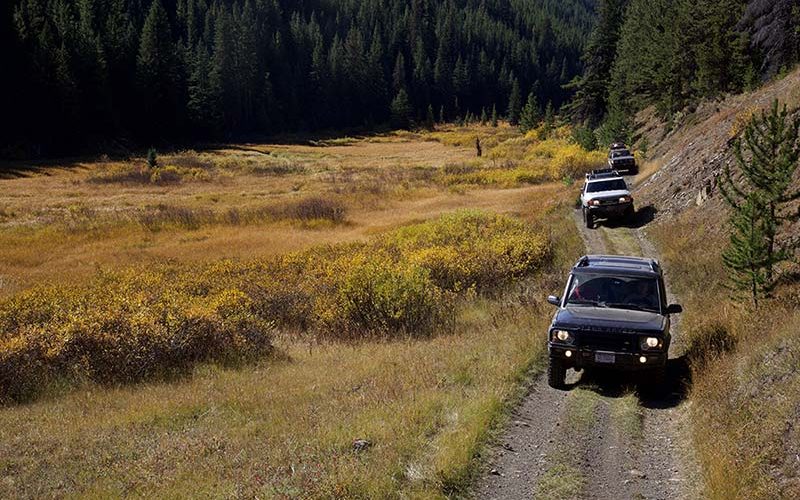
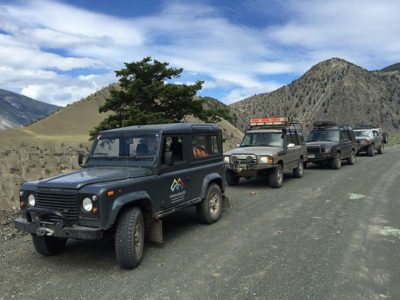
Much of the appeal of overland travel comes from the desire to head into the unknown to learn about and experience new places. Some seek out historical mining towns or camps, others are interested in rediscovering old trails to places of natural beauty. Along the road, you’ll probably meet people, and there is definitely a great social aspect to overlanding. When everyone is taking their time and enjoying the journey in a like-minded way, it’s easy to make friends.
Overland doesn’t always mean difficult routes and trail damage to your rig. In fact, most of the roads that overlanders take are in good shape, but are attractive because of their remoteness. For that reason, you can identify a self-sufficient 4×4 built for overland trips by the extra fuel and water strapped to the roof, multiple spare tires, tall antennas, a thick coating of road dust, maybe even lots of stickers from previous destinations. Your vehicle doesn’t have to be a big truck or 4×4 either – many small vehicles and even all-wheel drive cars are seen in far-off places.
When selecting an overland rig, there are many choices to consider. Among the most popular are Toyota pickups and SUVs, as well as Jeeps – usually models with lots of storage like a JK Unlimited or Cherokee. Other commonly seen badges include Land Rover, Nissan Xterra, Ford Ranger, and Japanese imports like the Patrol, Delica and Pajero.
If you are thinking about kitting out a vehicle in 2017 for overland travel, you are in luck. The popularity of long-distance travel and camping means that there are hundreds of manufacturers creating new products every month. Everything from roof top tents to complete pull-out kitchens are available; there truly are no limits to what you can buy to achieve your overland goals. Fortunately, strong competition among suppliers means that overlanding is getting more affordable every day.
It’s very easy to get distracted by all of the toys out there, but safety is important. Any trips that take you far from first responders, gas stations, grocery stores and cell towers should mean that you are always carrying a few key items that could save your life.
- A well-stocked first aid kit (and basic first aid training) suitable for the number of people in your vehicle can be helpful for even small cuts and scrapes, but crucial should the need for more serious care arise.
- Fires can start easily along trails, especially in dry months. A fire extinguisher rated ABC can help put out everything from cookouts gone awry to fuel line leaks in your engine bay.
- Food and drinking water are very important – four litres of water and two to three extra meals per person is a good start, and can be rationed in an emergency to last much longer.
- An amateur radio license for long-range VHF radios is becoming a ‘must have’ for overland travel. VHF offers the ability to use radio repeaters, and some frequencies (146.460MHz) have become unofficial standard communication channels.
- Recovery gear becomes even more important when you might be in an isolated area where tow trucks might be unreachable or very expensive. A properly rated recovery or snatch strap along with a couple of shackles and a means to connect them to your vehicle can make all the difference.

A key component of any adventure is documenting the journey. Photography skills will shine during any overland expedition, so it’s a good idea to bring an SLR-type camera with capable zoom lens. Video is an option too; GoPro cameras mounted to vehicles can capture some unique views, and drones provide a perspective of off-roading rarely seen before recent times – you can even use a drone to scout ahead for hazards or camp sites.
Overlanding may not represent something totally new, but the community that has emerged is a fantastic resource for like-minded individuals. Building an overland rig is not so much about rock crawling or hardcore off-road driving, but more about having a capable and well-equipped rig that might also do well as a daily driver. Whether you are new to 4x4s or a seasoned wheeler, it’s difficult to resist the allure of off-road travel to far-off destinations, and very easy to outfit your vehicle for an overland trip. What are you waiting for?




